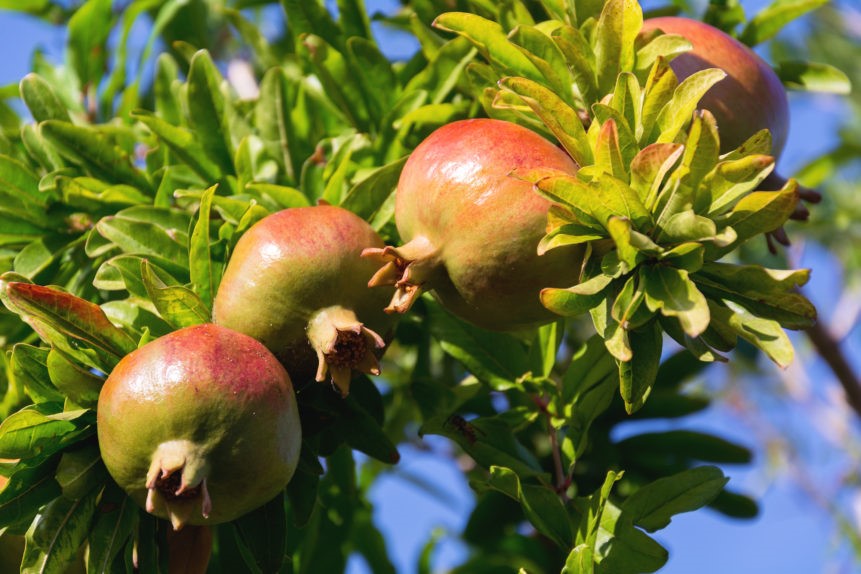Pomegranates are small red juicy fruits with hundreds of tiny seeds, each of them surrounded by a juicy red pulp. They have hard leathery skin. The pomegranates are known to grow on a bushy shrub or as a small tree. The harvest period is from mid-summer through autumn.
The seeds and fruit of a pomegranate are sometimes tart and sometimes sweet. Pomegranate’s bright red pulpy seeds can be used as a garnish for salads, fruit cups, or desserts. They can also be eaten raw or out of hand, although they can be messy due to their juicy pulp. This pomegranate juice is used as a base of grenadine syrup. It also adds a sweet and tart flavor to various basting sauces and certain marinades.
Pomegranates grow finest in warm and arid regions. These plants are indigenous from the Himalayas in northern India to the parts of Iran. Pomegranate growing is mainly carried out in the Mediterranean climate conditions. However, they can also be grown in cool regions using a greenhouse where the minimum temperature should not dip below 50°F.
History of Planting Pomegranate Trees
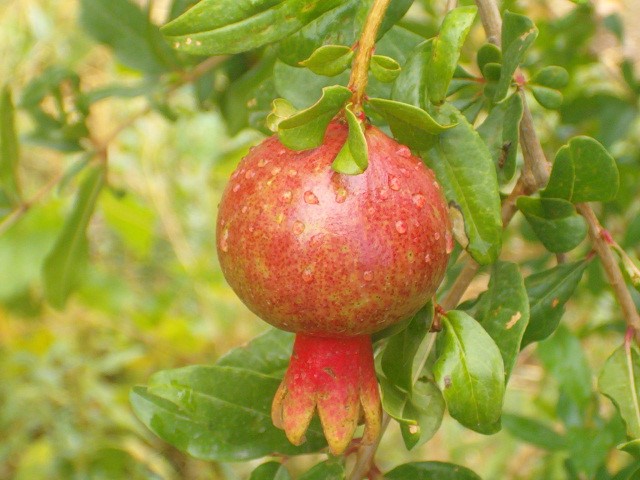
The pomegranate fruit is native to the land of Persia (now known as Iran). However, when the travelers discovered this plant, they did not take time to plant pomegranate trees across various regions of Asia, Africa, and Europe surrounding the Mediterranean Sea.
Over an extended period, this delectable fruit has worked its way into the mythology of various civilizations, including Egyptians, Romans, and Greeks; it has been mentioned and praised in both Bible and Talmud and has been featured in several significant works of art.
The traders along the ancient Silk Road can still be heard asking questions about how to grow a pomegranate tree and market this remarkable fruit, giving it the essence of being the fruit of royalty.
Knowing About Your Plant!
The bushy shrubs like pomegranates can grow from about 10 to 12 feet tall and about 6 to 8 feet wide. It can be instructed as a single trunk small, tiny tree or can be grown as a multi-trunked small tree. The bloom of a pomegranate tree is pink to orange-red in color and flowers from spring to mid-summer. The fruit is about 2 to 5 inches in diameter.
It has a hard rind which is brownish yellow to deep red. This rind of pomegranate plant forms a protective ball packed with papery chambers containing various seeds, each covered with a juicy red pulp. The taste of pomegranate is sweet and slightly acidic. This acidic nature is the reason that the juice of all varieties of pomegranates leaves a red stain.
Best Climate and Site for Growing Pomegranates
Pomegranates grow finest in areas that have hot and dry climates. These areas are dry, fertile, and best suited for growing pomegranates. The best-suited soil for growing pomegranates is deep loamy soil, as well-drained soil is highly recommended. Although pomegranates grow best in soil with high moisture content, they can also be grown in sandy to clay soil.
The soil should at least have a pH of 5.5, ranging maximum up to 7.5, which is optimal for growing pomegranates. The pomegranates should be planted in full sunshine and must be sheltered from the wind as frequently as possible. This leads to the accumulation of heat with the plant growing area, which makes fruit sweeter.
Pollination in Pomegranates
Pomegranates are self-fruitful plants that are a single variety of a given fruit type that will produce good fruit crops when grown by themselves. However, cross-pollination is also observed in pomegranates. Due to this cross-pollination, it is highly recommended, if possible, to grow two pomegranate plants in a single room or nearer to each other as it leads to an increase in the yield of the fruit.
Spacing Pomegranates
While growing pomegranates, it is advised to space the pomegranate plants about 15 to 20 feet apart from each other. When grown as a bush, the pomegranate can produce about 10 to 15 feet tall and same wide. Whereas when plants are trained to grow to a single trunk or as a small, tiny tree, they are pruned to about 20 feet tall and 10 to 12 feet wide or less.
Planting Pomegranates
A small pomegranate plant can be procured as bare-root, ball-and-bur lapped, or container-grown. The bare-root plant is suited best to plant in spring after the last frost but before the plant breaks its dormancy. Ball-and-bur lapped is also best planted in spring.
The container-grown plant can be planted during any season or time of the year, although it must be avoided to plant them in hot and dry weather. The planting site should be sheltered from a prevailing wind or breeze but should have direct sunlight. The compost or the manure in the soil must be worked well rotted.
A hole half as deep and double as wide as the pomegranate plant’s roots must be plowed. A cup of all-purpose fertilizer is added to the bottom of the hole. The plant is placed in the hole such that the soil mark from on the stem is even with the adjacent soil. All the twine and burlap are removed from the ball-and-bur lapped trees.
The roots of the plant must be spread in all directions. The hole is refilled with half native soil and half aged compost. The soil is watered, and a soil basin is created to hold the water during the watering time. Post planting, the plant is watered thoroughly with a high phosphorus liquid starter fertilizer.
Container Growing Pomegranates
The pomegranates grown using this method are generally 18 inches deep and wide. The plant is grown in a commercial organic potting mix. The soil used in this method should not be wet but contain just enough water to be moist. The pomegranates grown in this container are fed with an all-purpose fertilizer that is minutely higher in potassium minerals.
The tree must be reported in another container at least 24 inches deep and wide, nearly about after two years. If the pomegranates are required in a smaller size, the top and roots should be pruned every winter.
Training Pomegranates
The pomegranates can be trained in the following two ways:
Single Trunk
The pomegranates can be trained in this method by selecting a single stem that is straight and without bends or curves. That stem is then tied to a stake. The surrounding suckers are removed as soon as they appear—the well-spaced lateral stems to train as scaffold branches are selected in the second or the third year.
Multi Trunk
The pomegranate plant is trained to be a multi-trunk shrub by allowing five or six suckers to grow into permanent trunks. The new suckers are pruned as soon as they appear once the multiple compartments are selected. The multi-trunk shrubs are more long-lasting than the single trunk shrubs as they have a higher chance of surviving the frost damage.
Pruning the Pomegranates
The following steps are followed while pruning pomegranate plants:
The pomegranate branches are shortened by at least 40 percent during the first winter after planting. It is taken care that the plant is pruned once every following year to encourage new fruit spurts to grow. The flowers and the fruit of a pomegranate plant develop on short spurs of two or three-year-old wood, primarily on the outer edge of branches. Therefore, the growth of these plants is stimulated if they are pruned every year in winters.
Pomegranates Care, Nutrients, And Water
Pomegranates growing does not require a lot of fertilizer use. The aged manure or the aged compost is used in place of fertilizers and added to the base of the plants during each spring. The nutrients present are taken deep into the soil due to rain and irrigation.
The feed plants with the aged compost tea or a dilute solution of fish emulsion are used every two weeks during the growing season. Too much nitrogen fertilizer is also avoided as it leads to fruit drops. It must be taken care that the soil is kept evenly moist during the harvesting season as the evenly moist soil reduces the fruit split.
Harvesting and Storing of Pomegranates
The pomegranates are harvested when the skins of the fruit are fully colored bright deep red to yellowish-brown using the clippers. The harvest is carried out from mid-summer through the fall. The fruit splits if it is left on the tree after it has ripened.
When the fruit is pressed lightly, a cracking sound of grains is heard, the fruit is ready to be the pick. The pomegranates can be stored at room temperature for a long time, and only their skin darkens with passing the time.
For a longer duration of storage of the pomegranates, they can be refrigerated. The taste of pomegranate improves with passing time, and seeds become softer and more edible. The most common problem in pomegranate growing is split fruit, due to which the fruit deteriorates quickly.
Propagating Pomegranates
The seeds of a pomegranate fruit germinate with ease. The primary propagation method which is used is hardwood cuttings. The wood logs of 8 to 10 inches and ¼ to ½ inches wide are used in late winter from the previous shoot or sucker growth. The rooting process can take up to a minimum of two years.
Pomegranate Problems and Control
The pomegranate plants are not the ones that are frequently bothered by either some pests or some diseases. However, the leaves of the pomegranate plants should be checked occasionally for the signs of mites or leaf rollers. If, by some chance, there are pests or other insects are found on these plants, then they should be sprayed with an excellent insecticidal soap or should be suffocated with horticultural oil.
Varieties of Pomegranates to Grow!
There are a few dozens of varieties of pomegranate fruit that are found around the world. Some of the most common and easily found types of pomegranate are listed below:
Wonderful
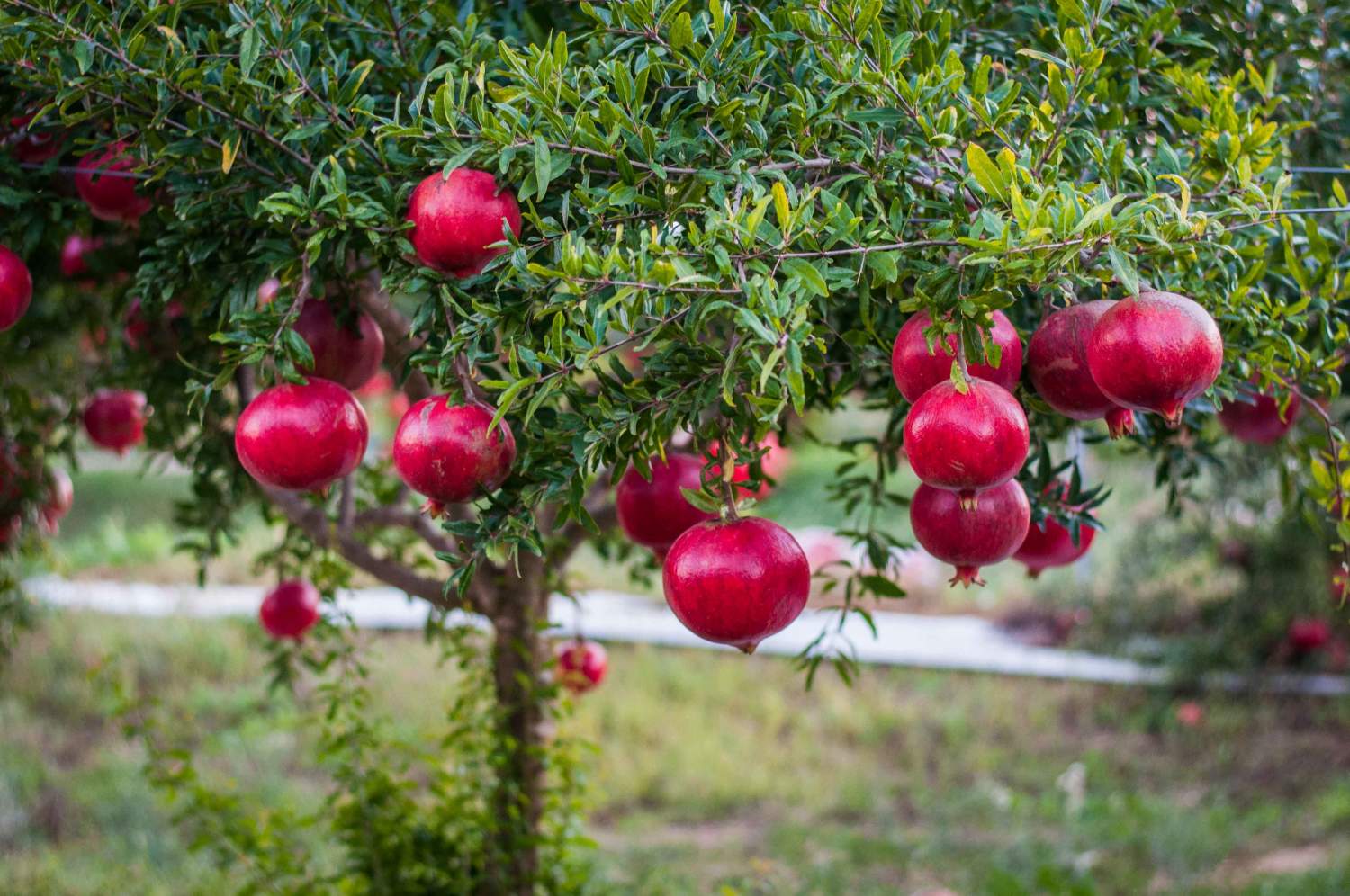
It is the variety of pomegranates that has an orange-red flower. The fruit of this plant is red, which is the same as its juicy pulp.
Ambrosia
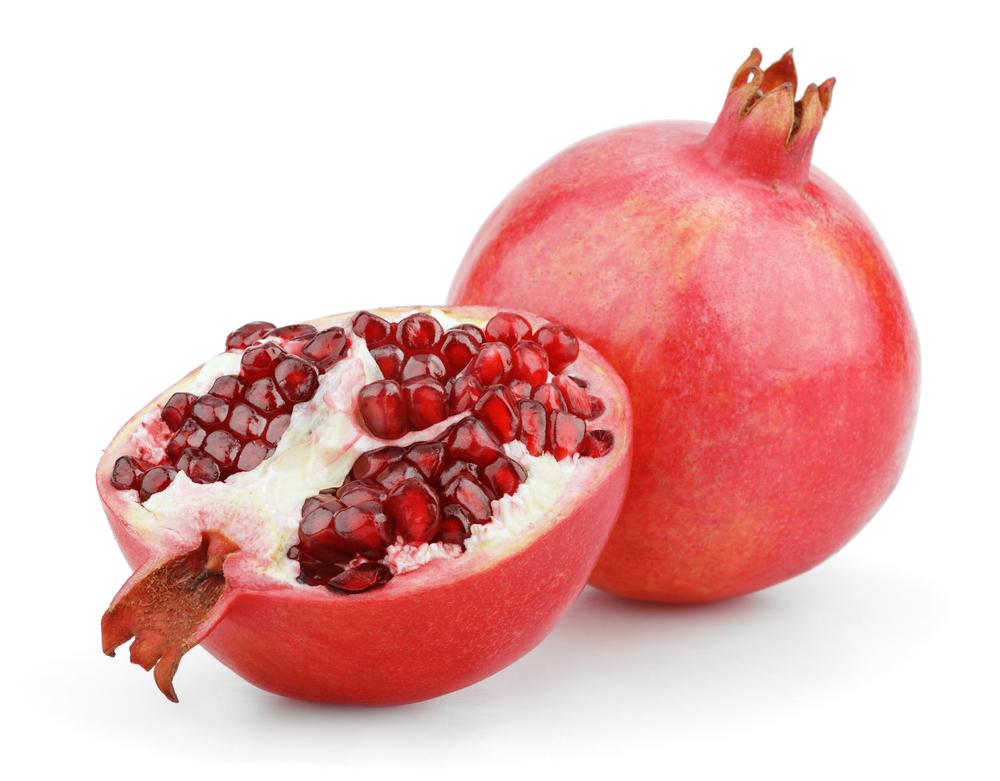
This variety of pomegranate plants has huge fruit. This fruit of Ambrosia has pale pink skin. The pulp of this fruit has an unusual purple color.
Kashmir
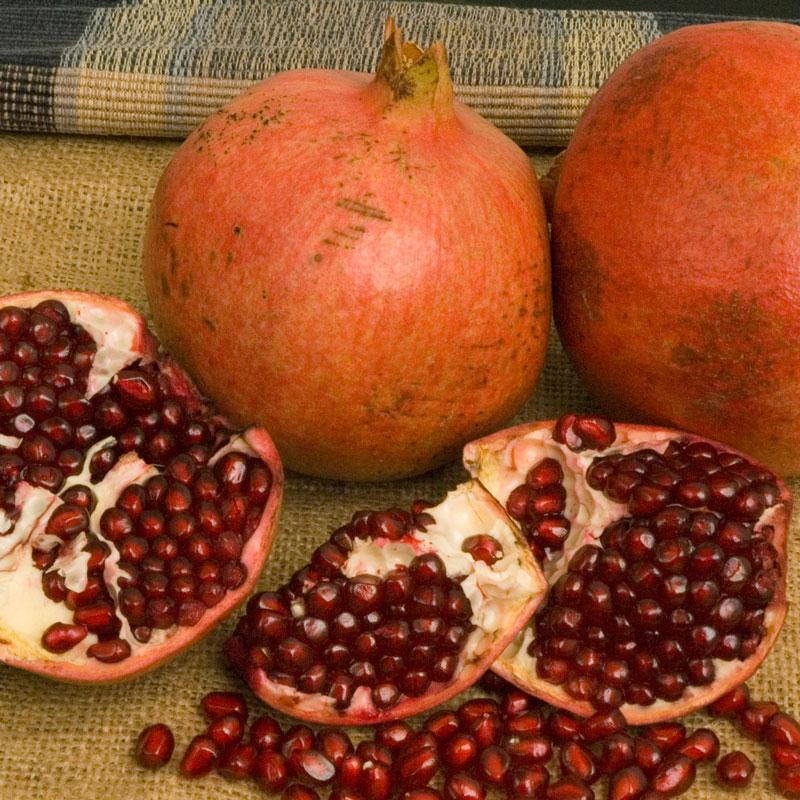
This variety of pomegranate is named after a northern state of the same name as the Indian subcontinent as it is found in large quantities there. This plant has a pinkish-red fruit. The seeds of this fruit have a very intense and acute flavor. This variety of pomegranate is used in juice.
Ever Sweet
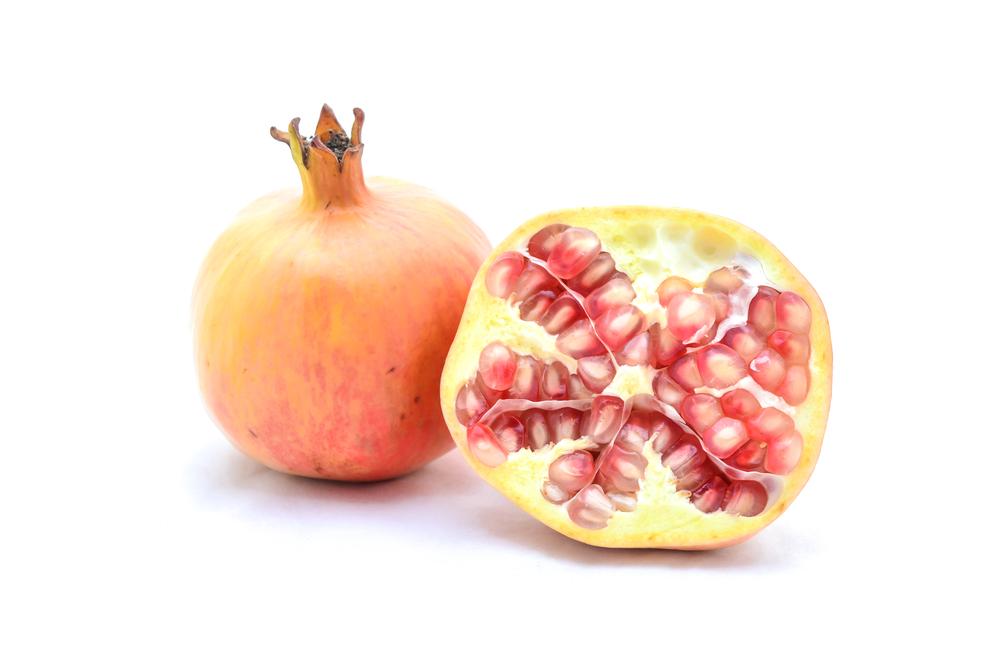
This variety of pomegranates is one of the fascinating ones. This variety is almost without any or the minimum number of seeds. The unique thing about this type of pomegranate is transparent skin with deep red juicy pulp. The juice of this type of pomegranate is good in flavor and non-staining.
Pink Satin
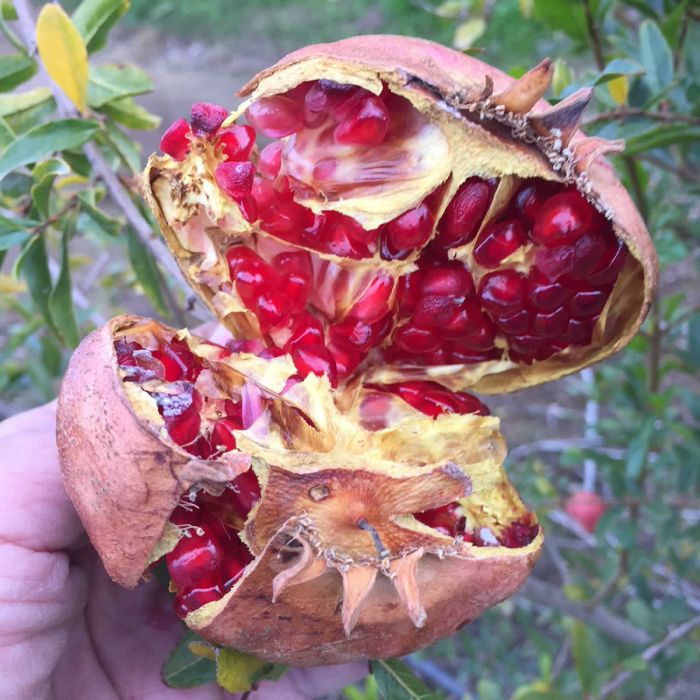
This type of pomegranate has pinkish-red fruit. There are soft seeds present in these fruits. The juice of the pink satin pomegranate is non-staining.
Granada
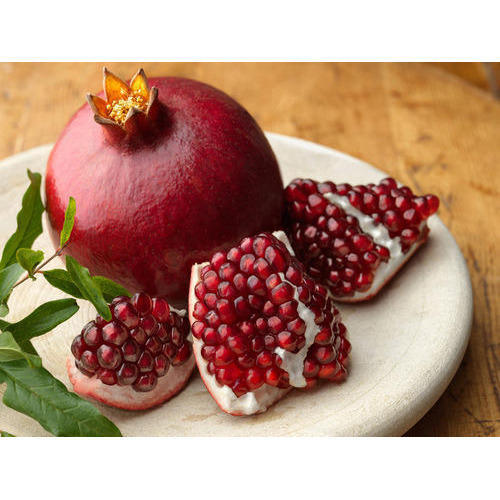
This variety of pomegranate fruit has flowers that are pink or pinkish-red. The fruit that this plant bears is also pink in color and has a juicy pink color.

